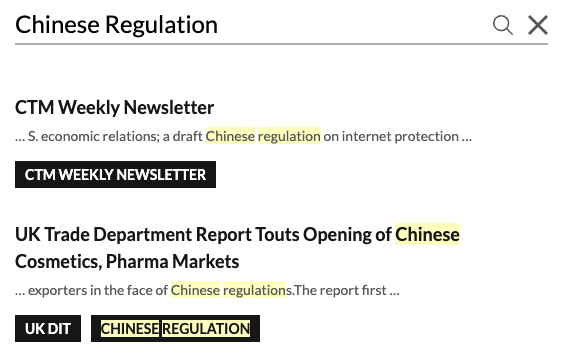The European Commission released its "39th Annual Report from the Commission to the European Parliament and the Council on the EU’s Anti-Dumping, Anti-Subsidy and Safeguard activities and the Use of Trade Defence Instruments by Third Countries targeting the EU in 2020." The announcement indicates that China is the leading target of such measures, stating that the highest number of EU trade defence measures concerns imports from: China (99 measures); Russia (9 measures); India (7 measures); and the United States (6 measures).
One issue of growing interest in this area is "subsidies granted by third countries," as the Commission notes that it "imposed countervailing duties on cross-border financial support given by China to Chinese-owned companies manufacturing glass fibre fabrics and continuous filament glass fibre products based in Egypt for export to the EU."
The report explains that China’s government "subsidises its companies in a myriad of ways, and the lack of transparency means that understanding them is challenging." The EU’s response has been "to tackle the problem by imposing countervailing measures where justified," including the adoption of a new approach to deal with "cross-country subsidisation," in which Chinese government subsidies are provided to companies operating in another country and these companies then export their products from the other country to the EU. The Commission explained this subsidization and its response as follows:
One of the major initiatives under China’s Belt and Road Initiative is creating overseas Economic and Trade Cooperation Zones. The purpose of these zones includes gaining access to raw materials, transferring production (excess) capacities and making use of the benefits of trade agreements signed by the host country with third countries.
Two AS [anti-subsidy] investigations, completed in 2020, were notable in that, for the first time the Commission imposed countervailing duties on such cross-border financial support. In the two cases, the Commission countervailed Chinese subsidies given to Chinese-owned companies manufacturing glass fibre fabrics and continuous filament glass fibre products based in Egypt and exporting from there to the EU. In the glass fibre fabrics case, the Commission also countervailed subsidies granted to exporting producers of the product based in China. In line with changes introduced in 2018 under the modernisation of the trade defence instruments, the lesser duty rule was not applied in these investigations resulting in measures that fully offset the subsidies the exporters received.
The investigations showed that Chinese-owned companies operated from a Special Economic Zone in the territory of Egypt and were provided with subsidies by the governments concerned, benefitting from exports to the EU. These subsidies created additional capacity and opened new channels for export of subsidised products to the EU, causing injury to EU companies producing the same products.
China provided many of the subsidies as part of the Chinese Belt and Road Initiative making the subsidies a factor in fostering local production.
The investigations confirmed the growing practice of state-owned Chinese companies receiving subsidies to export production capacity outside of China to special economic zones.
This practice was used in Egypt, where exporters proceeded to supply the Union market with dumped and subsidised products duty free, presenting a challenge with regard to the EU-Egypt Association Agreement.
Tackling such cross-country subsidisation shows the Commission’s commitment to counter new types of subsidisation which are damaging the EU industry. This response by the Commission in 2020 to China’s evolving subsidy practices builds on an earlier case where another Belt and Road Initiative was successfully countervailed. The AS investigation on tyre imports from China, where measures were imposed in 2018, was the first time the Commission countervailed the Silk Road Fund. The investigation found that tyre imports, not only benefitted from the usual range of distorting financing by China, but from a package of support measures by the Government of China (preferential loans/refund on interest paid on loan/equity participation in restructuring exercise/grants). This allowed China National Tire & Rubber Co. Ltd (CNRC) to acquire a 65% stake in Pirelli Group at the end of 2015. Those AS measures are still in place.

